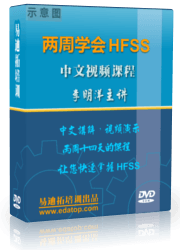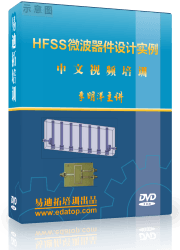- 易迪拓培训,专注于微波、射频、天线设计工程师的培养
HFSS15: Defining Anisotropic Conductivity Tensors
If the material property is anisotropic, its characteristics are defined by its anisotropy tensor. You must define three diagonals for anisotropic conductivity. Each diagonal represents a tensor of your model along an axis.
These tensors are relative to the coordinate system specified as the object’s Orientation property. By specifying different orientations, several objects can share the same anisotropic material but be oriented differently.
1. In the Bulk Conductivity row in the View/Edit Material window, select Anisotropic from the Type pull-down list.
Three rows named T(1,1), T(2,2) and T(3,3) are added below the Bulk Conductivity row.
2. Enter the conductivity along one axis of the material’s conductivity tensor in the Value box of the T(1,1) row.
3. Enter the conductivity along the second axis in the Value box of the T(2,2) row.
4. Enter the conductivity along the third axis in the Value box of the T(3,3) row.
The values of the conductivity along the first and second axis apply to all axes that lie in the xy cross-section being modeled. The values of the conductivity along the third axis applies to the z-component. These values affect current flowing in dielectrics between the conductors.
These values can also be defined as variables.
HFSS 学习培训课程套装,专家讲解,视频教学,帮助您全面系统地学习掌握HFSS
上一篇:Defining Frequency-Dependent Material Properties for Lossy Dielectrics
下一篇:Defining Functional Material Properties







